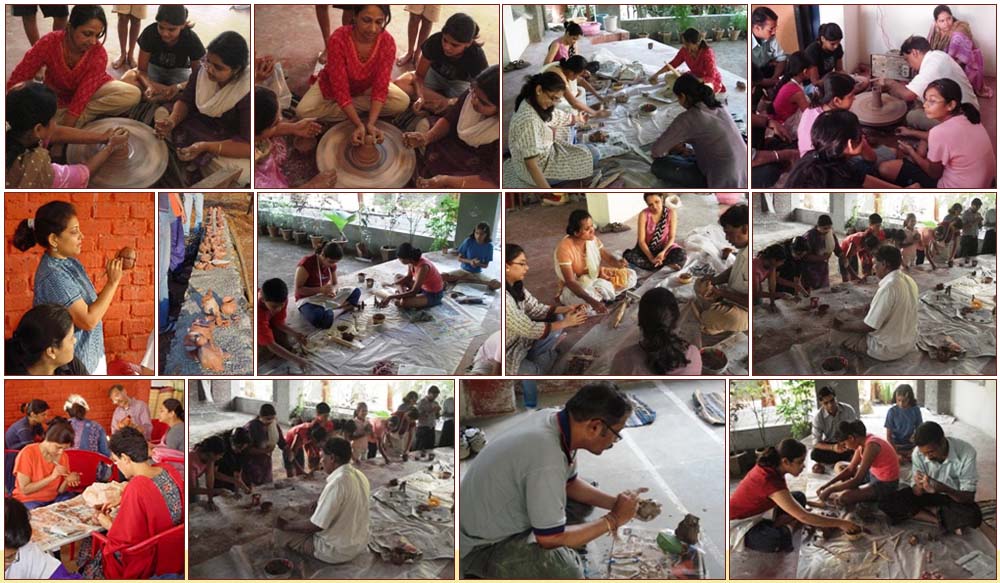Origin of "Kumbha"
In India, pots were called, "Kumbha" and potters "Kumbhars". The etymology of this word gives a substantial clue to the story of finding the use of clay and its wonderful properties. India was and is a land of elephant and they by nature love to play in muddy water, and always pour water on their foreheads with the help of their trunks. In ancient time, it must have so happened that these elephants while playing in water must have poured muddy water over their foreheads. The clay on their foreheads must have dried after some time, giving them the shape of their foreheads. This might have given to man the idea that such dried hollows of clays could be used as vessels of storage. This is how the legend goes. Therefore, as the head of the elephant is known as "Kumbha" and later when man began to make such vessels in clay, he was called "Kumbhar".
Terracotta Pottery
- Types of clays
- Earth ware / Terracotta
- Stone ware
- Porcelain
- Methods of making pots
- Throwing (Wheel pottery)
- Slab making or pinch pottery
- Coil pottery
- Firing methods
- Traditional wood firing / pit firing
- Electric Kiln (furnace) firing
- LPG Kiln firing
- Diesel furnace firing
- Clay combinations
- Earth wave - Ball clay + China clay + Silica (flint)
- Terracotta - Red garden clay + whiting
- Stone wave - Ball ware + Fire Clay + Silica + feldspar
- Porcelain - China clay + Ball Clay + Feldspar + Silica
- Colour after firing
- Earth ware - Red / Buff
- Terracotta - Red / Pink / Brick
- Stone ware - Pink / Off white
- Porcelain - White
- Temperature required
- Earth ware / Terracotta - 600 0C and above
- Stone ware - 900-1000 oC
- Porcelain - 1100 oC and above
Pictures from Pottery workshops

